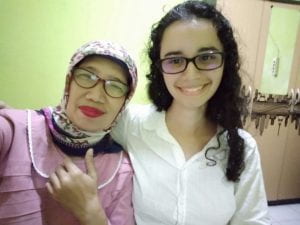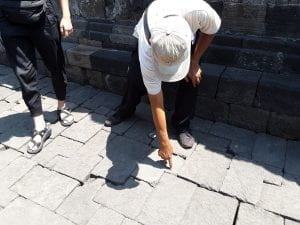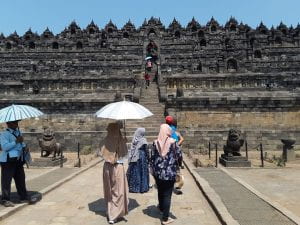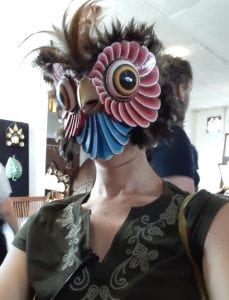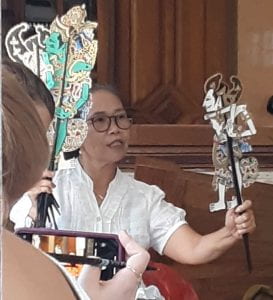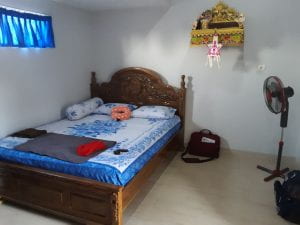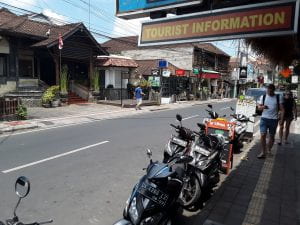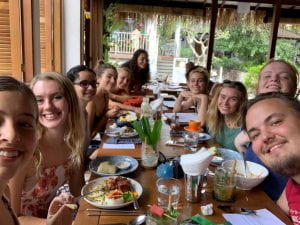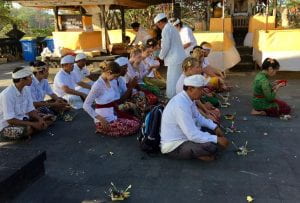For three weeks, we left Bali and stayed in Java, starting in Yogyakarta and finishing in East Java. Our move was accompanied by a host of changes different from our time in Bali. In Yogyakarta, we were assigned new homestay families, dwelt in a more urban area, attended lectures in a university classroom, and spent a good portion of our time with other university students born and raised in Indonesia.
After coming to grips with my homestay in Bali, my homestay family in Yogyakarta proved to provide a very different experience. Yet, it was one just as significant but in a different manner. The house and room were certainly less opulent than mine in Bali, but it meant that the family and I were in closer quarters, and we found it easier to become familiar with one another and form strong bonds. Because of our close proximity, we often chit-chatted to fill the silence. One conversation that sticks with me is one that centered around food. My host mother asked me if I liked apples; I replied, no. She then asked if there were apples in the United States, to which I responded, yes. Then the question: Where in the US? This innocuous question threw me for a loop. I said, all over, in every state. The conversation ended; but it lingered in my head long afterwards. My surprise at her question about where you can find apples in the US—implying the question where can’t you find apples?—prodded me to reflect upon my differing experiences with food I the US and in Indonesia. It made me wonder at the fact that food in the US remains largely constant, and despite variations in quality across states, there is little that you cannot obtain in any state if you have the finances to do so. Conversely, in Indonesia, there are plenty of foodstuffs that are only available in certain regions, which sparks an eagerness in me whenever we go visit a new place. I am already considering deeply on how to bring that eagerness for the new with me to the United States in order to branch out and explore my own country.
Another difference from Bali is that we held lectures in a university classroom, joined by some university students from the Philosophy Department. It was comforting to be in the presence of other undergraduate students, and we provided each other opportunities to practice our language skills—English for them and Bahasa Indonesia for us. We were able to discuss both the academics at their university, as well as hold informal conversations about music, food, and personal politics. All in all, it was certainly refreshing to interact with other young people.
They even joined us on our excursions. One such excursion included a visit to Borobudur, the world’s largest Buddhist temple. The moment we stepped off the bus we were bombarded with venders on foot hawking water, hats, and even little sun umbrellas. In comparison to similar experiences at Tanah Lot, such street sellers served as an immediate sign that this place catered heavily to tourists, and I should adopt a careful eye when looking at Borobudur’s amenities. In and around the temple, a tour guide led us to certain spots to expand upon their historical significance and to interpret stories carved into the outer walls of the temple.
Every once in a while, he would pause to encourage us to take pictures, and his encouragement further impressed upon me how this space was used to cater to tourists—considering how stereotypical (and often true) it is for tourists to be constantly snapping photos. Even part of the temple is yellow-colored, remnant of Dutch efforts in the past to make parts the temple easier for their cameras to take pictures. Despite the fact that I certainly took lots of pictures (with intent to post on this blog), it did make me feel queasy whenever I heard the tour guide urge us to take photos, because I only heard the enabling of a tourist mindset; and I sometimes wonder at the implications of taking pictures both in the moment and as a way to record memory.
I know that other students took pictures—some for scrapbooking, others to post on social media—and it fascinates me to observe when and of what people will take pictures, and more importantly, of what they will not take pictures. I hold the assumption that when people snap photos for their personal use (IE: scrapbooking), they are making subtle judgements about what it worth remembering in their future about their past experiences; and when they take photos for social media, they are making similar judgements about what is worth sharing with other people. That which is worth remembering are grand moments—such as visits to beautiful sites (such a Borobudur) or extraordinary activities (such as ziplining)—because those experiences tend to be commemorated in photography. I find it less common to observe people taking pictures of what they consider commonplace or unextraordinary. It should stand as a warning for me; I should resolve to keep my eye open for meaning in any experience. I cannot safely assume that any one of my experiences is unextraordinary or commonplace. This, too, is a mindset that I hope to cement within myself and continue to use long after this program ends.
Thanks, and until next time!

